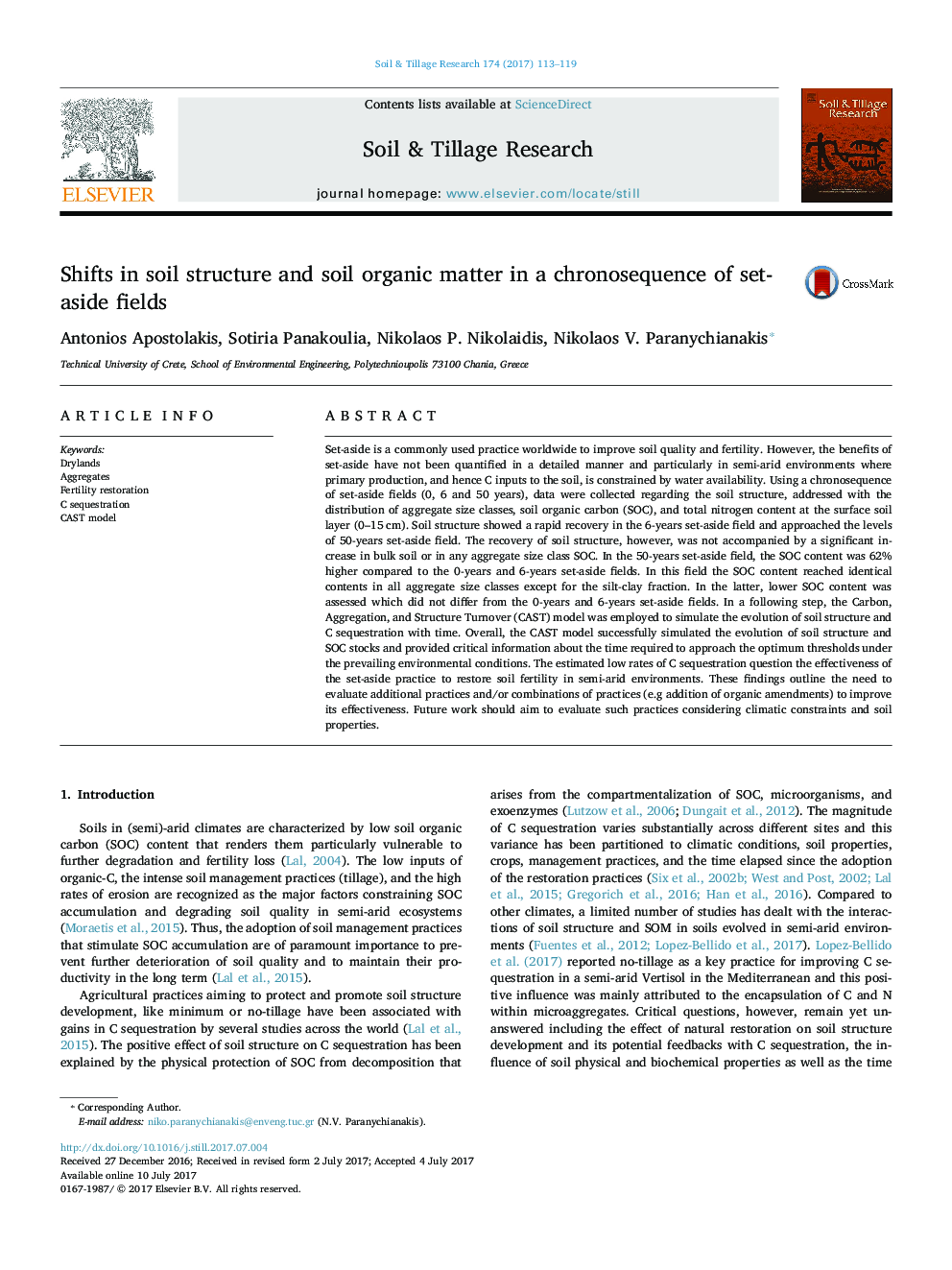| کد مقاله | کد نشریه | سال انتشار | مقاله انگلیسی | نسخه تمام متن |
|---|---|---|---|---|
| 4927459 | 1431829 | 2017 | 7 صفحه PDF | دانلود رایگان |
- Soil structure recovered within 8 years since the application of set-aside practice.
- C sequestration was similar in all aggregate size classes except that of silt-clay fraction.
- The highest C stocks were observed in macroaggregates (>250 μm) and reached steady state after 13 years of set aside practice.
- The CAST model provided accurate simulations of soil structure and C sequestration evolution.
- Field data and CAST model simulations indicated that the set-aside practice resulted in low rates of C sequestration.
Set-aside is a commonly used practice worldwide to improve soil quality and fertility. However, the benefits of set-aside have not been quantified in a detailed manner and particularly in semi-arid environments where primary production, and hence C inputs to the soil, is constrained by water availability. Using a chronosequence of set-aside fields (0, 6 and 50 years), data were collected regarding the soil structure, addressed with the distribution of aggregate size classes, soil organic carbon (SOC), and total nitrogen content at the surface soil layer (0-15Â cm). Soil structure showed a rapid recovery in the 6-years set-aside field and approached the levels of 50-years set-aside field. The recovery of soil structure, however, was not accompanied by a significant increase in bulk soil or in any aggregate size class SOC. In the 50-years set-aside field, the SOC content was 62% higher compared to the 0-years and 6-years set-aside fields. In this field the SOC content reached identical contents in all aggregate size classes except for the silt-clay fraction. In the latter, lower SOC content was assessed which did not differ from the 0-years and 6-years set-aside fields. In a following step, the Carbon, Aggregation, and Structure Turnover (CAST) model was employed to simulate the evolution of soil structure and C sequestration with time. Overall, the CAST model successfully simulated the evolution of soil structure and SOC stocks and provided critical information about the time required to approach the optimum thresholds under the prevailing environmental conditions. The estimated low rates of C sequestration question the effectiveness of the set-aside practice to restore soil fertility in semi-arid environments. These findings outline the need to evaluate additional practices and/or combinations of practices (e.g addition of organic amendments) to improve its effectiveness. Future work should aim to evaluate such practices considering climatic constraints and soil properties.
Journal: Soil and Tillage Research - Volume 174, December 2017, Pages 113-119
